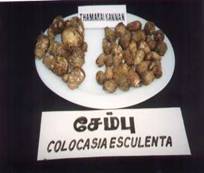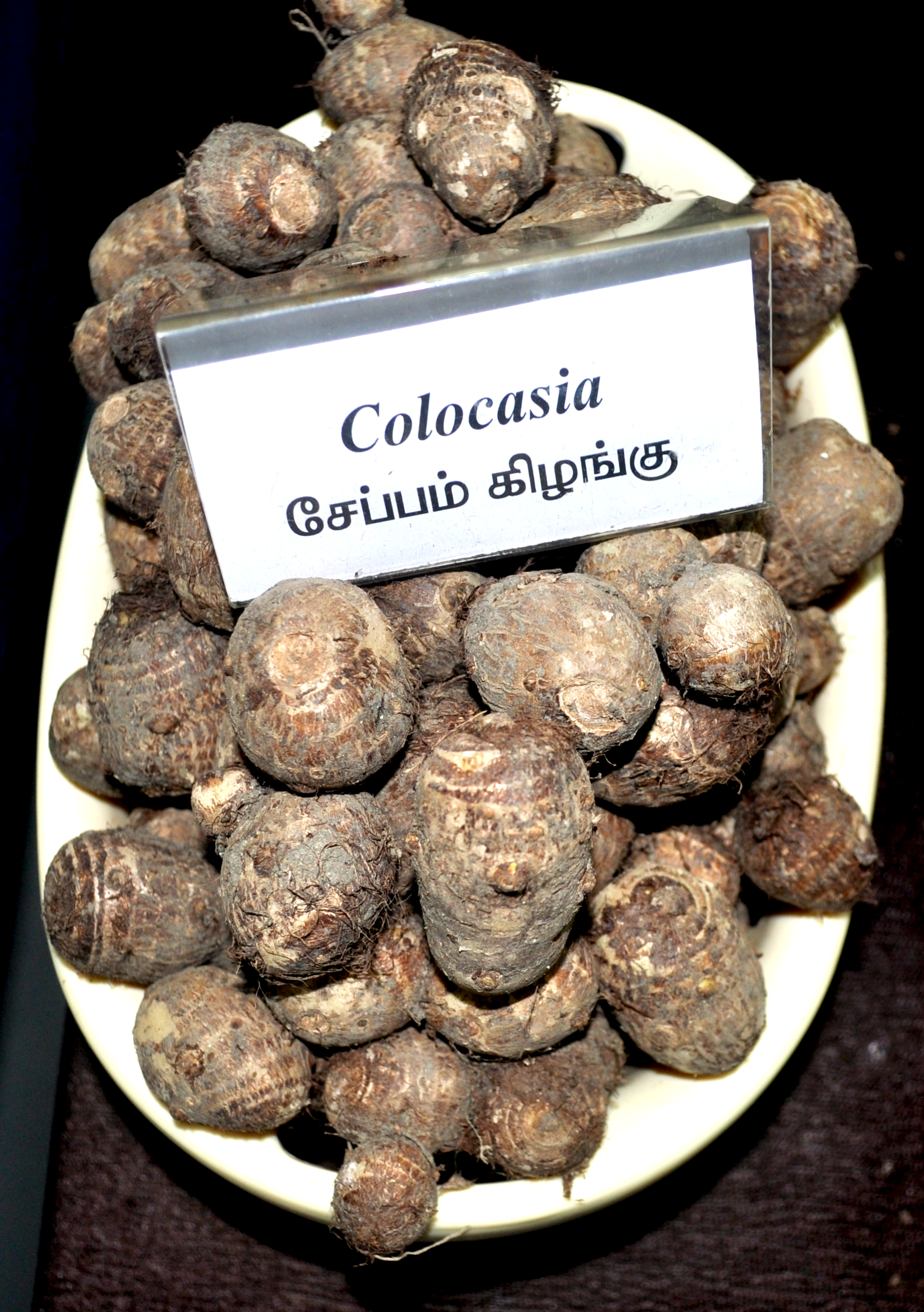Colocasia (Colocasia esculenta L. Scott)
Araceae
Varieties
Co 1, Panchamukhi, Satamukhi (Kovvur), Sree Pallavi, Sree Kiran and Sree Rashmi are the popular cultivars. |

|
 |
|
Co 1 |
Soil
It comes up well in loamy soils with a pH range of 5.5-7.0 and a combination of warm and moist climate with a mean temperature of 21-270 C. It can be grown up to 1500 m elevation with well distributed rainfall of about 1000 mm during growth period. In areas where rainfall is less, a good amount of supplementary irrigation is required for successful production.
Season
June – July and February – March are the suitable season for cultivation.
Planting material and seed rate
Cormels weighing about 20-25 g form good planting material. Seed rate of 800 kg/ha is required.
Preparation of field
Plough the field to a fine tilth and form ridges and furrows at a spacing of 45 cm. In sandy loam soil, pit method is followed.
Planting
Plant at a spacing of 45 cm in furrows.The cormels may be planted to a depth of 2.5 to 7.5 cm.
Irrigation
Irrigation is done once in a week
Application of fertilizers
Apply 25 tonnes of FYM, 20 kg N, 30 kg P and 60 kg K/ha as basal and 20 kg N, 30 kg P and 60 kg K/ha on 45 days after planting.
After cultivation
Weeding and earthing up should be done within 45 to 60 days after planting. Deep cultivation should be avoided. Small inefficient suckers from the mother plants have to be removed along with the second weeding. It requires profuse irrigation and shade.
Crop protection
Aphids and worms are pests attacking the leaves.
Control
Spray Quinalphos or Dimethoate 0.05%. Mealy bugs and scale insects damage cormels and corms and hence select cormels free of these pests for planting. If infested, the seed cormels should be dipped in Dimethoate 0.05% solution for 10 minutes.
Leaf blight (Phytophthora colocasiae)
Oval or irregular purplish or brownish necrotic lesions with watersoaked periphery appear on leaves. In severe cases, the entire leaf lamina and the petioles are affected giving a blighted appearance and collapse of the plant. Heavy incidence causes up to 50 per cent crop loss.
Management
Use of field resistant varieties viz., Muktakeshi and Jankhri, early planting to avoid heavy monsoon rains, use of healthy planting materials, removal of self-grown colocasia plants, spray with fungicides viz., Mancozeb (0.2%) or Ridomil MZ 72 @ 2 g/l of water and treating the seed tubers with biocontrol agents viz., Trichoderma viride
Harvesting
Crop will be ready for harvest in 6-8 months after planting. One month prior to harvest, all the suckers may be wrapped around the base of the mother plant and covered with soil by earthing up, for arresting further vegetative growth and sprouting of tubers. After this, irrigation has to be withheld to hasten maturity. Harvesting is done by carefully uprooting the plants and the mother corms and cormels are separated.
Yield
About 8 – 10 t/ha can be obtained in 180 days.
|


